City of Culture: Why Hereford wants to be about more than just cider
- Published
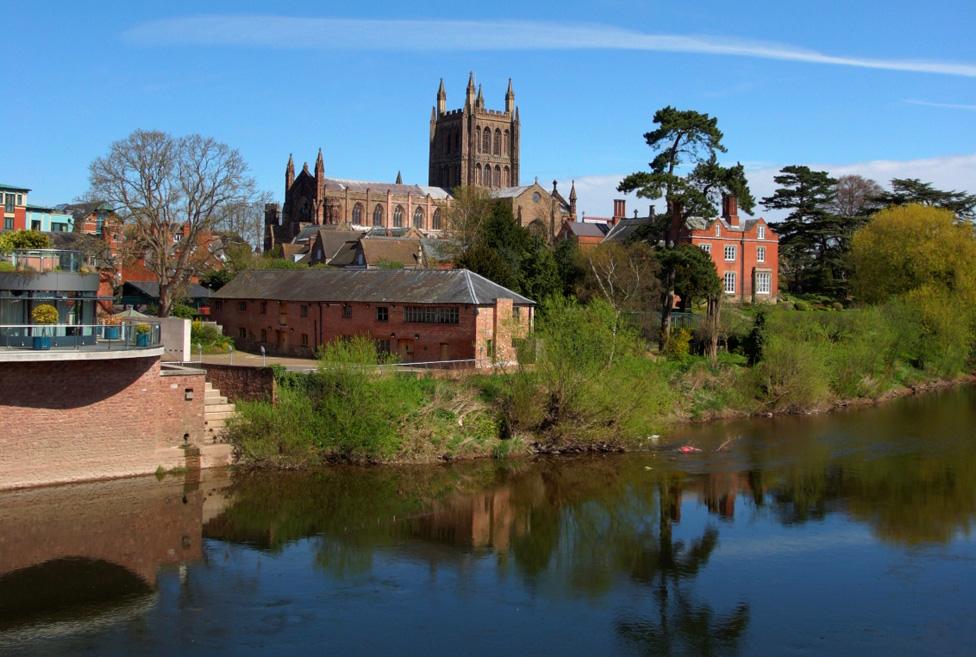
Hereford is a small city of 58,000 people. Does it have what it takes to become the 2021 City of Culture?
Joel Black is a trainee artist blacksmith - a big man in a check shirt with a great bushy beard, hammering metal in front of the forge as the sweat drips from the end of his nose. He also works as a chef. An unlikely combination? Apparently not.
Both involve heat, for a start. "It's about controlled burning," he says. "And this thing I'm doing with layered steel at the moment is very similar to puff pastry, but a lot more hard work. You're just layering and layering and folding and folding."
The Rural Craft Centre in the village of Holme Lacy just outside Hereford is on a converted farm that's now a college campus. It's hot - because there are some two dozen coke-fuelled forges. The coals in the centre of each forge and the metal being worked glow bright red. And it's noisy - the room rings with a cacophony of metal striking metal, and an enormous mechanical hammer so powerful it needs its own bespoke foundations set into the concrete floor.
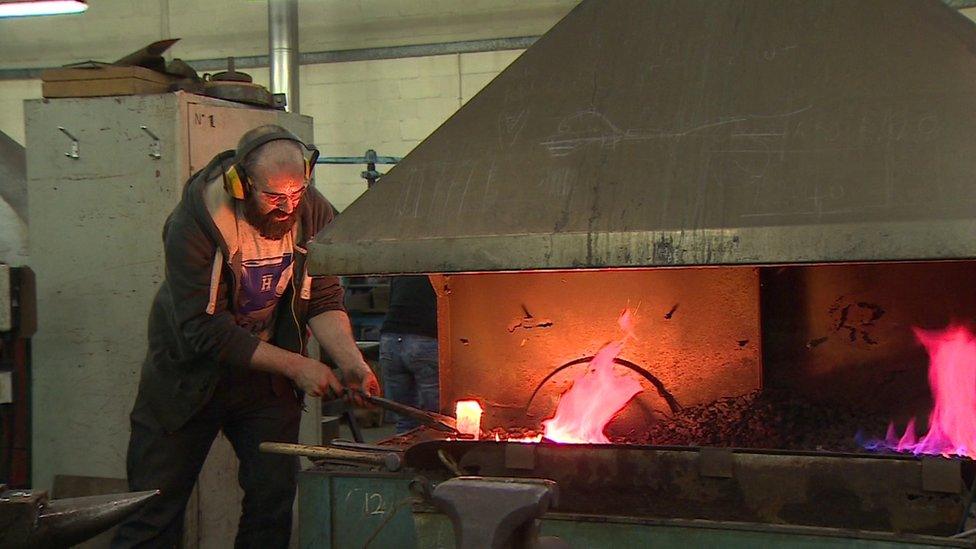
The grimy, sweaty figures bent over anvils and bathed in the light from the fires are students on one of only three courses in the world to offer a degree in artist blacksmithing, which marries traditional skills with training in contemporary design. There's another degree course in Sweden and a third in Illinois. Ironically the man working alongside Joel at the forge, Gabe Chaille, is from Illinois. He came to Hereford because unlike the Illinois course this one, run by Hereford College of Art, takes beginners.
Gabe says the rolling, green Herefordshire landscape reminds him of home. Which is surprising, because it's beautiful in a very English way. Edward Elgar, that most English of classical composers, lived in Hereford for eight years from 1904 and composed some of his greatest works there, including his two symphonies and his violin concerto.
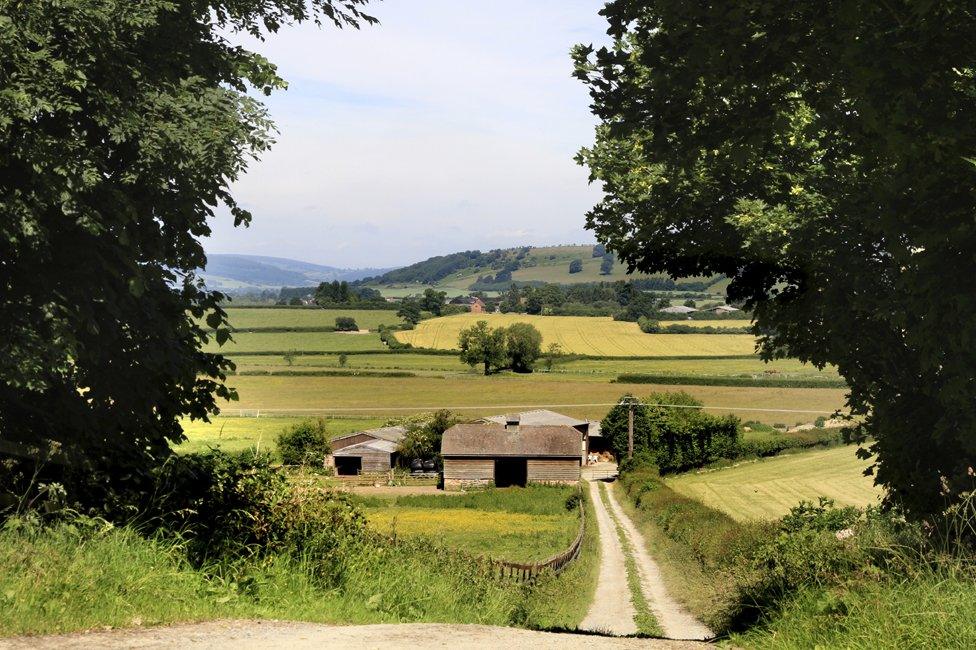
Herefordshire's hills and hedgerows seem an unlikely setting for a City of Culture - and that's one reason Hereford's bid stands out from the pack.
This is a rural area and Hereford itself is a relatively small place of just 58,000 people. Rival candidates like Coventry, Sunderland and Paisley have spent decades grappling with the consequences of "deindustrialisation" - a fancy name for the closure of mines, mills and factories and the social and economic problems that result. Hereford knows all about social and economic disadvantage, but the context is different.
Abigail Appleton is the Hereford College of Art's principal and a member of the city of culture bid team.
"It's very easy if you come here, particularly from an urban centre, to see lambs gambolling at this time of year and think it's beautiful," she says. "But there are real challenges with the isolation of rural communities, devastated services, and a very, very low wage economy."
Herefordshire relies on agriculture and tourism for jobs, which means a high proportion of the workforce are on the minimum wage - yet people still have to meet the costs of running a car in a thinly populated county (total population just 180,000) with widely-scattered shops, schools and surgeries.
The City of Culture bid, she says, offers a chance to transform not just the city but the whole county.
It's a sentiment I heard echoed elsewhere. Ian Archer, the chief executive of Hereford's Courtyard Arts Centre, told me the city of culture bid would stretch to the very borders of Herefordshire "so we can bring the market towns into the city and take the city out to the market towns".

In one of those towns, Ross-on-Wye, I met Eleanor Kercher, who makes things out of green wood on a home-made lathe among the hyacinths and bluebells in her back garden. She's also the chair of Made in Ross, a collective of artists and craftspeople who exhibit in Ross's rugged stone Market House.
"There are lots of things happening, like Made in Ross, but we don't hear very much about them," she told me. City of Culture status would foster creativity and encourage local people to get involved, she says. "It would make what we're doing more joined-up and it would give it a higher profile."
The Courtyard helped broker the deal with Ross Town Council to develop the Market House, with the aim of helping local artists and craftspeople make money from their work. Roger Morgan is the Courtyard's chairman, and also chair of the group steering the Hereford bid.
He believes success would "turbocharge" the local economy and do wonders for the profile of city and county alike. "Most people have no idea where Hereford is. You ask people and they go: 'Isn't that north of London?' Well, when we're City of Culture they'll know where Hereford is."
The Courtyard is one of Hereford's main venues and would play a leading role in events in 2021. It has a 400-seat auditorium and was opened in the 1990s, largely paid for by the National Lottery.
It recently lost its entire £130,000 a year grant from Herefordshire District Council as the local authority struggles, like others round the country, to make cuts. While the councils in every other city in the running for 2021 are bankrolling their bid and playing a leading role, Herefordshire is offering support but no money, and the organisational lead has been taken by Roger Morgan's committee.
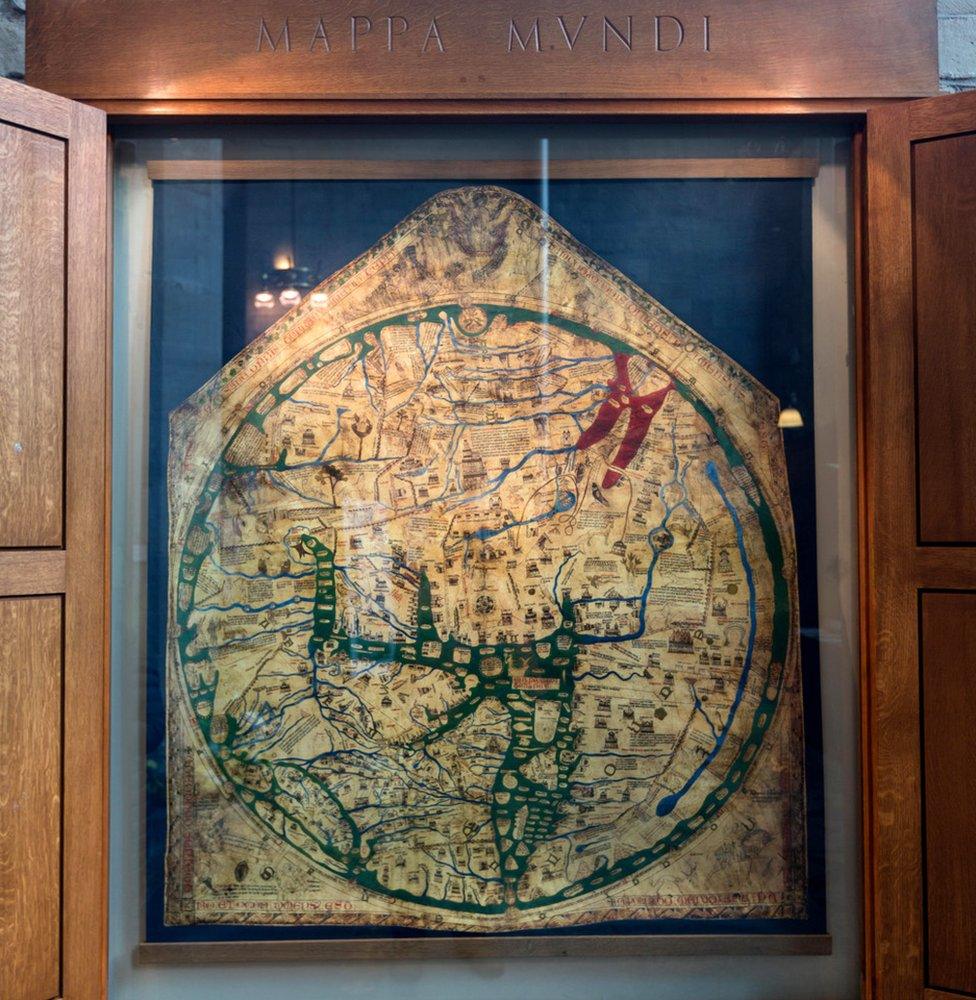
The city's other big venue is Hereford Cathedral, which dates back to the 12th Century. Home to the medieval Mappa Mundi, to a fascinating medieval library where the books are still chained to the shelves and to a hard-working cathedral choir, it's also one of the three cathedrals (the others are Worcester and Gloucester) which mount the annual Three Choirs Festival.
The Three Choirs is one of the oldest arts festivals in Britain, dating back to the early 18th Century. And in 2021, the City of Culture year, it's Hereford's turn to play host.
But might Hereford's definition of "culture" prove a rather old-fashioned one for the government-appointed panel that will choose the winning city? The cathedral choir does sing music by contemporary composers but it works in the most traditional of settings - none of the artists in the Made in Ross collective whose work I saw could be described as cutting edge.
When I put that to Geraint Bowen, the cathedral's director of music, he said simply: "It's part of what our county's about".
But others bridled at the suggestion. Because an artist works with traditional skills like blacksmithing doesn't mean they can't be radical and innovative as well, Abigail Appleton suggests.
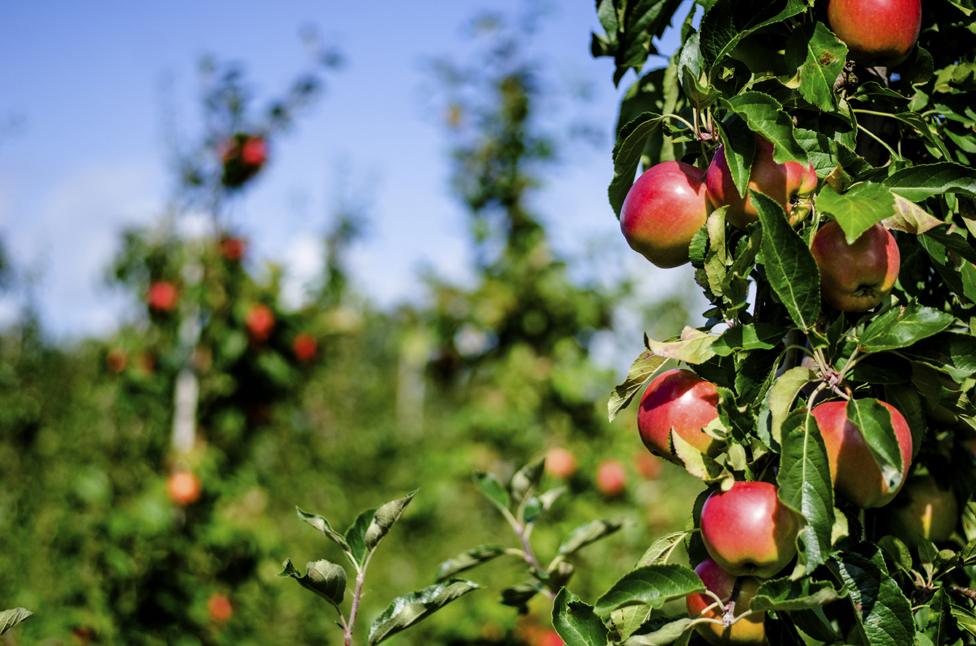
Jackie Denman agrees. She's involved with two projects promoting Herefordshire's flourishing cider industry. The county is home to two of Britain's biggest cider makers, Bulmers and Westons, and to almost 10,000 acres of cider apple orchards. Some years ago she started The Big Apple, which promotes and celebrates cider in the east of the county, and she's on the steering committee of Golden Fire, a digital arts project due to launch in June which explores Herefordshire's cider heritage.
We met at the offices of Rural Media, the production house putting together the Golden Fire material, also backed by the National Lottery. "Herefordshire is a traditional county," she said. "It's moved quite slowly into the 21st Century, and its cultural life is very rich but quite traditional. Here is a new opportunity to really shine a light on the future, on how culture can be interpreted in a much broader way."
But could Hereford's bid stumble at another hurdle - a lack of cultural diversity?
But Roger Morgan points out that many of Herefordshire's agricultural workers come from Eastern Europe, and there's a long tradition of immigrants to the area from Portugal and a sizeable gypsy and traveller community. The bid team is looking for ways to involve them.
Jackie Denman says that while the county may not "tick a diversity box" at first sight, it has a whole set of other challenges that the government should appreciate and which culture could help to address.
One of those challenges is the number of young people who grow up in Herefordshire but leave to find work elsewhere. A revitalised cultural sector might, the argument goes, give them an incentive to stay.
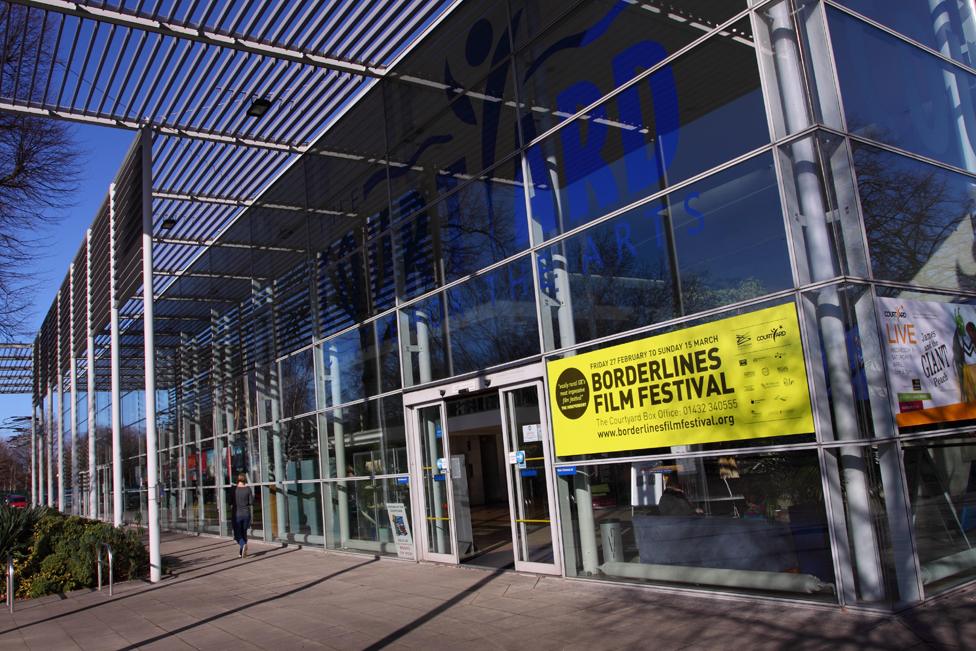
At the Courtyard I met two members of the theatre's 400-strong youth drama group, 18-year old Lydia Stansbury and 15-year old Fletch Garrard.
"Lots of people know about Herefordshire's agricultural background," Fletch told me, "but very few people have actually been here and experienced what we're all about."
Lydia wants to be an actress. "I'd love to come back to Hereford," she told me, "and if we do become City of Culture that might bring me opportunities. I'm going to the University of Birmingham in September and that's such a vibrant and arty city. I feel Hereford has the potential to be something like that."

City of culture contenders profiled in the Magazine
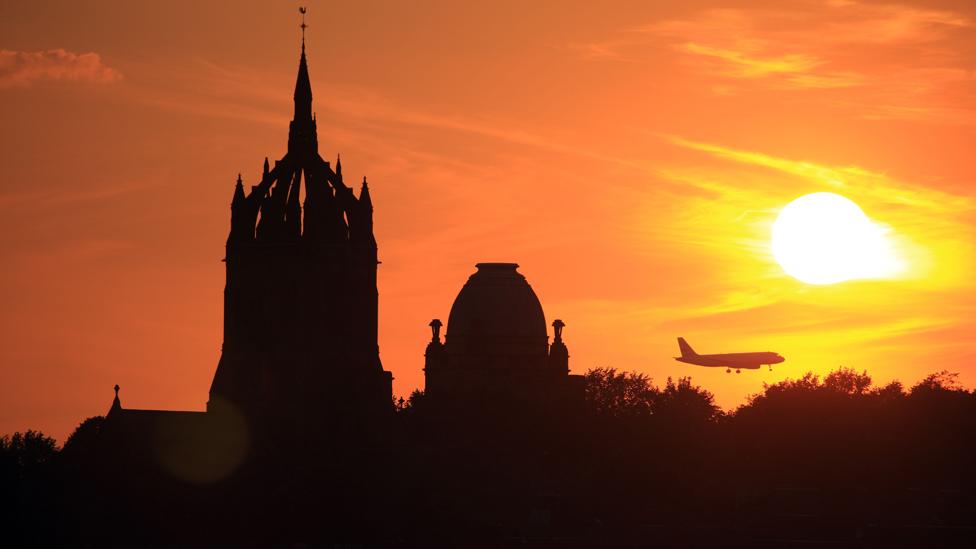

Subscribe to the BBC News Magazine's email newsletter to get articles sent to your inbox.